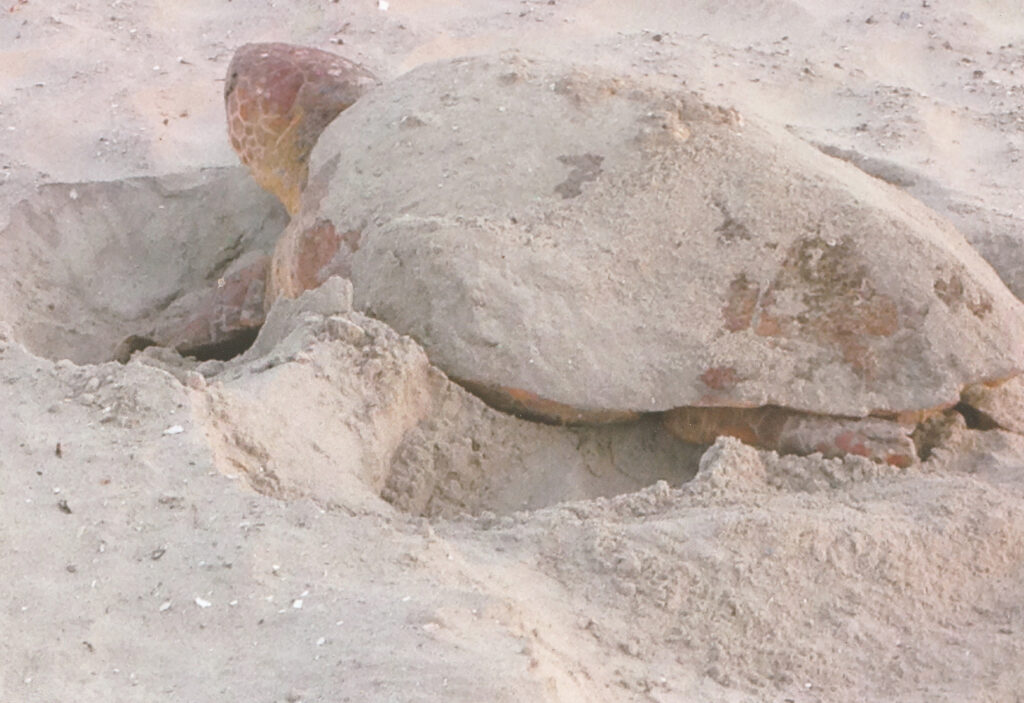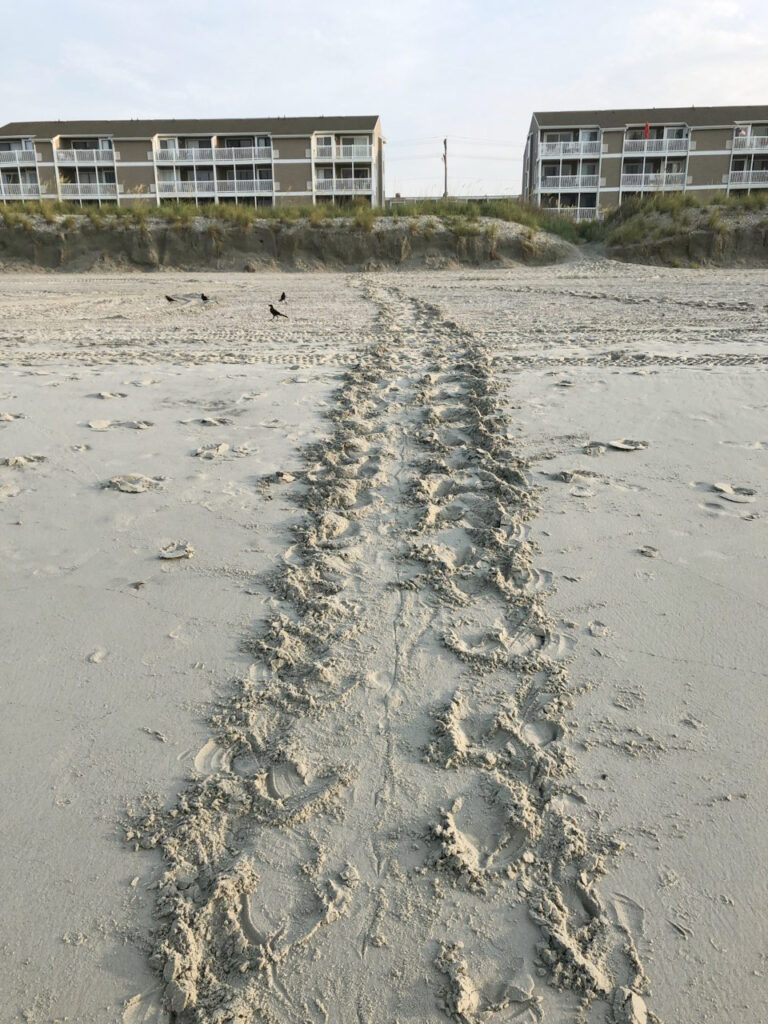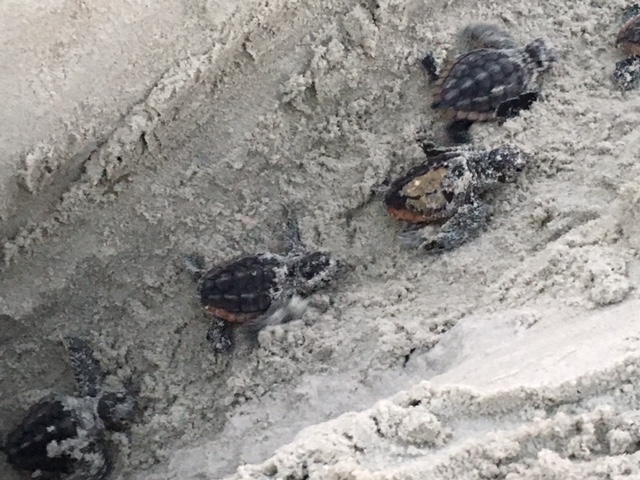By Ruben Lowman
Sea turtle nesting season began in South Carolina this month and will continue until the end of October. That means we will hopefully be seeing these endangered and ancient creatures soon here in North Myrtle Beach.
I recently spoke with Linda Mataya of the North Myrtle Beach Sea Turtle Patrol in order to find out more information about these beautiful animals. Her organization of all-volunteers has been helping to protect, monitor and study sea turtles who make North Myrtle Beach beaches their temporary home during the summer months since 2010. She recounted to me that they walk the entire length of the beach every morning at sunrise, looking for any signs of sea turtle nests or activity.
She explained that the majority of the sea turtles that nest here are loggerheads and that adults can grow to reach about three feet and more than 300 pounds.
The nesting females will spend approximately one to two-and-a-half hours on the beach, with about half the time digging the nests and the other half returning to the ocean after they lay their eggs. Mataya said that she will lay anywhere between 50 and 150 eggs at one time, and she may reproduce up to six times during the season.

Because of the physical undertaking these turtles experience during this process, she says they will be tired when they finally make it to shore to nest and that they need to be left alone so they can do what comes natural. Typically, these sea turtles will nest at nighttime, as they are nocturnal and the activity at the beach is at its lowest then. But still, there is a growing trend of people walking on the beach at night with flashlights, looking for shells and other mementos.
Mataya cautions against this, as it could scare or stun the exhausted nesting female and force her to flee back towards the ocean where she will release all of her eggs and they will be gone. “We ask if you are out walking the beach at night, please leave the female sea turtles alone, do not flash lights on her. If she is bothered she will rush into the water and release all of her eggs into the ocean and we will lose them.”

When Sea Turtle Patrol members find a nest they will surround it and mark it off as a nesting area to be protected until the eggs have hatched and returned to the ocean. It takes roughly six to eight weeks for the eggs to hatch. Once they hatch they need to make it to the ocean immediately to avoid overheating or they will perish.
Mataya says that anyone who comes across these baby sea turtles should first contact the Sea Turtle Patrol and then assess the situation. If the turtle is active and moving around, it can be taken past the breakers and released into the ocean. If it is stranded on the beach, then the turtle is injured or sick and needs medical attention. In this situation, do not push the turtle back into the ocean, contact the Sea Turtle Patrol immediately. It is against state and federal law to remove them from their natural environment.

Once they finally make it to sea their real journey begins, where “they will face a lot of obstacles out in the ocean – predators, pollutants, a lot of things around human activity,” Mataya said.
They may one day return to North Myrtle Beach to nest themselves, but only if we do our job to maintain and preserve the vital ecosystems they call home, even temporarily.
As Mataya emphasized, “Only about one in 1,000 eggs survives to reach maturity and North Myrtle Beach gets somewhere between 800 to 1,200 eggs in a typical season. So, just one turtle from our beaches may make it to maturity.”
The sea turtles who visit us during the summer only exist in coastal waters off the Carolinas, Georgia and Florida, and thus they play a distinct role in our environment. They are endangered and need our help to ensure their continued survival.
“If we don’t protect them, they will be gone,” Mataya said.
If you come across either an adult nesting turtle or hatchlings, please call the NMB Sea Turtle Patrol at 843-213-9704. Be sure to fill in any hole you may make at the beach before you leave. Do not leave trash on the beach, such as plastic bottles, plasticware and especially balloons, as the turtles can get tangled in the strings and often mistake them for jellyfish, a vital food source for them.

 North Myrtle Beach Times Serving our Community and the Grand Strand for over 50 years
North Myrtle Beach Times Serving our Community and the Grand Strand for over 50 years

